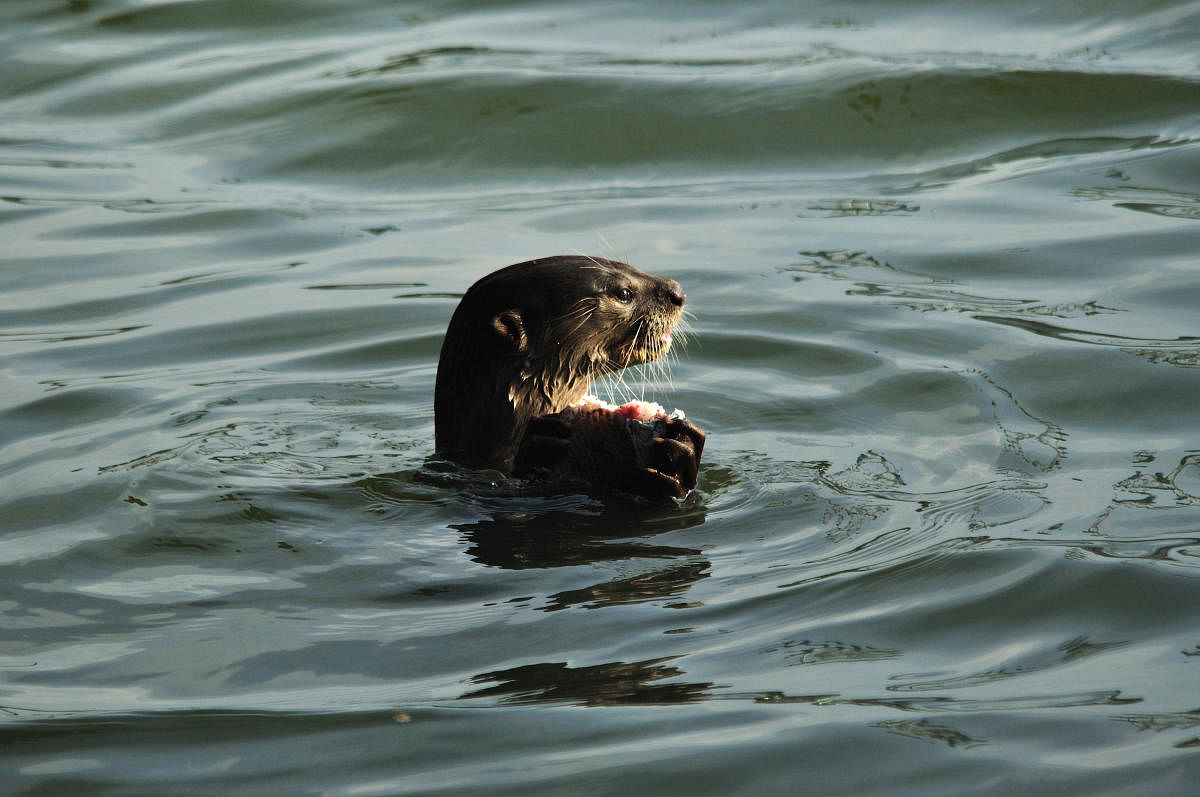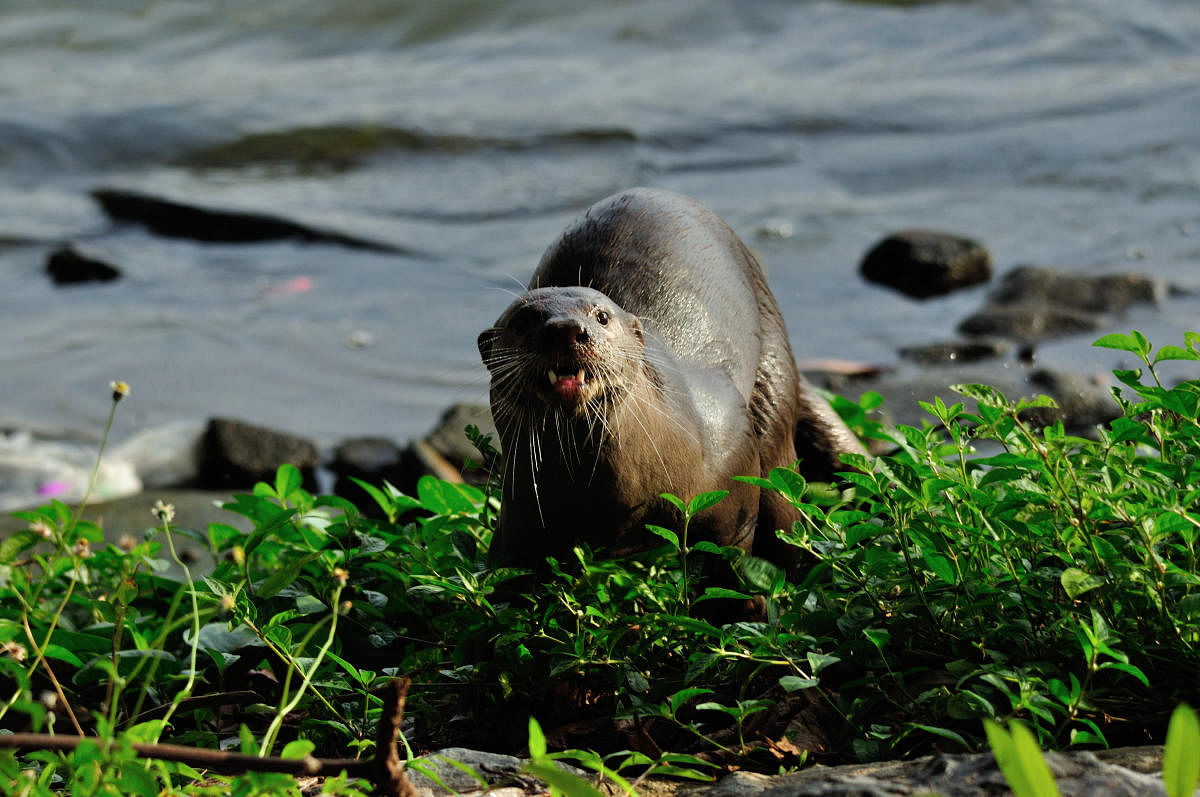
Earlier this January, Twitter was abuzz with memes of a carnivore sighting on the campus of the Indian Institute of Science (IISc), Bengaluru. While a professor wondered if the said carnivore was a new student, faculty, or admin staff; another called it an unpaid intern at IISc. The sudden attention to this ‘new visitor’ was triggered by media reports of the sighting of a smooth-coated otter (Lutrogale perspicillata).
While the actual last-known sighting of a smooth-coated otter at IISc is two-year-old, if we truly want the otters to call our cities home, we should begin by acknowledging their presence and taking small steps to ensure they survive.
Otters and their significance
Otters get their name from an old English word ‘otor’ meaning water. There are 13 species of otters known today. Smooth-coated otters are the most widespread species of the three and can be found in rivers, streams, large lakes and ponds.
They swim as a team to catch fish and emerge along the shore to consume the fish by holding it in their forelimbs. When they have eaten, they can be seen resting along secluded banks of streams and rivers or out in the ocean, close to the shore.
They give birth to 3-5 cubs in crevices or dens along the bank of rivers. The smooth-coated otter is one among the three species of otters found in India. Measuring about a meter long and weighing about 10 kg, a long cylindrical body and a pointed tail are characteristics of otters. The face is rather squat, and the thick whiskers are evident. They move like a wave, hobbling on their webbed feet.
As aquatic carnivores, otters can play an integral role in the ecology of our waterbodies. They prey on fish and other crustaceans such as crabs or freshwater shrimps and in the process sustain nutrient flow through aquatic ecosystems. Otters, especially the
young ones, can be prey for several species of birds as well. The presence of otters is also indicative of the water quality in streams, rivers or swampy ponds.
Threats to otters
Smooth-coated otters were once widespread across their distribution range in Asia, which is today shrinking. Their population is declining owing to several threats. Otters were once persecuted for their skin. Although the cases of poaching have reduced, otters continue to be at risk from various other human actions. Destruction of the rivers and streams, interlinking projects, the construction of dams across streams as well as overfishing, and urbanisation are currently threatening the otter populations across their range.
Considering the severity and the widespread nature of these threats, the International Union for Nature Conservation has listed the smooth-coated otter as a vulnerable species, indicating that the species may be at risk of being endangered.
Reconciliation ecology
Singapore had records of the smooth-coated otter which disappeared around the time when the river was degraded, and the forests were gone. After a gap of nearly 40 years, the otters have swum across from Malaysia and established in Singapore. The river that passes in the centre of the island is restored. Fish now swim in the waters. The otters move along the river and often cross the roads to move between parks and swim in ponds and catch fish.
Cities in India too have had various forms of biodiversity. While some survive, many are lost to the race of rapid urbanization. Often, there is no long-term investment of time and effort to bring back biodiversity and most efforts end up as mere tokenism.
Even amid rapid urbanisation and the loss of various species, cities like Bengaluru have managed to retain a lot of bio-diversity. In this light, the presence of the otter is not unusual or surprising or novel. One of the first sightings of the smooth-coated otter was from the Roerich estate along Kanakapura road in 2017. Subsequently, in 2018, a lone otter was sighted in the Jubilee Garden of IISc, and then another was observed from the Hesaraghatta lake.
All these sightings appear to suggest that the otters may not be extinct from the city and have, somehow, survived in the fast-changing landscape. Questions about how they persist in this fast-changing, human-dominated landscape are still a mystery. Are otters even capable of swimming through the sewage-filled streams and rivers connecting the lakes? Are they dispersing to different habitats or are showing up on rare occasions because they are unable to survive in these modified landscapes? Further research in this direction could help us understand the needs of an aquatic carnivore such as the otter.
For otters, we could think of our lake systems as seasonal interconnected waterways that they were. We could make sewage treatment more efficient. Connecting our green spaces along the waterways and roads to facilitate the movement of biodiversity is what the city should do. Perhaps then, we all could watch otters frolic by the water’s edge.
(The author is a faculty at ATREE)
